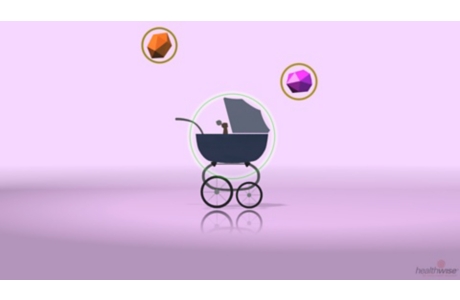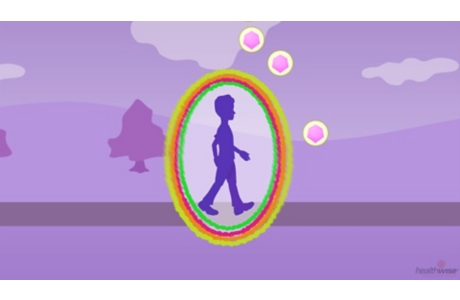Tetanus
Topic Overview
What is tetanus?
Tetanus is a disease caused by a bacterial infection. The bacteria make a toxin, or poison, that causes severe muscle spasms. Tetanus can be very dangerous, but you can get a shot to prevent it. Tetanus is also called “lockjaw” because muscle spasms in your jaw make it hard to open your mouth. Tetanus also causes seizures and makes it hard for you to swallow or breathe.
In the United States, most people have had shots to prevent tetanus, so the disease is relatively rare. People who have never been immunized or haven’t had a booster in the last 10 years are more likely to get tetanus. This includes people who recently moved to the U.S. from countries where tetanus shots are rare.
How can you prevent tetanus?
You can prevent tetanus by getting all of your recommended immunizations (shots). There are three different combination immunizations that include a vaccine for tetanus.
- DTaP (diphtheria, tetanus, and pertussis): DTaP is given in a series of 5 shots beginning at age 2 months and ending at ages 4 to 6 years.
- Tdap (tetanus, diphtheria, and pertussis): Tdap is the first booster shot for tetanus and is recommended at age 11 or 12. It’s also recommended for all teens and adults who never had the Tdap shot. And all pregnant women need a Tdap shot during each pregnancy.
- Td (tetanus and diphtheria): Td is given as a booster shot every 10 years.
If you never had tetanus shots as a child, or if you’re not sure if you had them, you’ll need to get 3 tetanus shots in about a 1-year time span. After that, 1 booster shot every 10 years will work for you.
Get a tetanus shot as soon as possible if you have a dirty cut or wound and 5 or more years have passed since your last tetanus shot. Some people may need tetanus immunoglobulin (TIG) for a wound that is at high risk for tetanus. The immunoglobulin is usually only needed if you have not (or do not know whether you have) completed the tetanus shot series.
What causes tetanus?
The bacteria that cause tetanus are called Clostridium tetani. They are usually found in dirt and soil, most often in areas with animal waste such as farms and ranches. These bacteria typically enter the body through a wound, cut, or splinter. They can also enter the body through an unclean injection, such as when a person injects an illegal drug.
The bacteria grow best when they are not around oxygen. The deeper and narrower the wound, the less oxygen there is around it, so tetanus is more likely. For example, the bacteria can thrive in a puncture wound from a dirty nail. The dirtier the wound, the higher the risk of getting tetanus. But tetanus can also grow in a clean wound.
Tetanus is not contagious, so you can’t get it from a person who has it.
What are the symptoms?
Tetanus symptoms appear slowly and get worse over time. The time it takes for symptoms to appear after a cut or injury ranges from days to months. In most cases, symptoms of tetanus appear within 14 days.
Tetanus symptoms often begin with a headache and trouble opening your mouth (lockjaw). You also may have trouble swallowing and/or a stiff neck, back, or shoulders.
As the toxin spreads, it can be deadly. It can cause problems with your blood pressure and heart rate. It can cause severe and painful muscle spasms in your neck, arms, legs, and belly. If spasms continue and get worse, they can break bones, including the spine.
How is tetanus diagnosed?
There is no lab test for tetanus. A doctor can usually diagnose tetanus after asking questions about your symptoms and past health and doing a physical exam. Because other problems can cause muscle spasms like tetanus, your doctor will do tests to make sure your symptoms are not caused by something else.
Your doctor will do tests to decide how to treat your symptoms. For example, he or she may order a blood test (arterial blood gases) to see how well you are breathing.
How is it treated?
If you are infected with tetanus, you will need to stay in a hospital so you can get medicines and fluids to control muscle spasms and pain. You also may need treatment to help you breathe. Your doctor will fully clean any wound or cut to remove bacteria. Cleaning the affected area stops bacteria from making toxin. Treatment also includes:
- Antibiotics. These medicines kill bacteria.
- Tetanus immunoglobulin (TIG). This is a protein that helps your body’s immune system find and destroy bacteria. TIG boosts your immunity while your body fights the infection.
- Medicines to decrease muscle spasms. You also may be treated in an intensive care unit (ICU) with medicines that paralyze your muscles for a while until your body begins to recover. In this case, you will need treatment to help with breathing and other body functions.
After you’ve had tetanus, you are not immune to the disease. You could get infected again. So keep getting routine tetanus shots after you get better.
References
Other Works Consulted
- American Academy of Pediatrics (2015). Tetanus. In DW Kimberlin et al., eds., Red Book: 2015 Report of the Committee on Infectious Diseases, 30th ed., pp. 773–778. Elk Grove Village, IL: America Academy of Pediatrics.
- Centers for Disease Control and Prevention (2011). Tetanus. In W Atkinson et al., eds., Epidemiology and Prevention of Vaccine-Preventable Diseases, 12th ed., pp. 291–300. Washington, DC: Public Health Foundation. Also available online: http://www.cdc.gov/vaccines/pubs/pinkbook/downloads/tetanus.pdf.
- Centers for Disease Control and Prevention (2011). Updated recommendations for use of tetanus toxoid, reduced diphtheria toxoid and acellular pertussis (Tdap) vaccine from the Advisory Committee on Immunization Practices, 2010. MMWR, 60(01): 13–15. Also available online: http://www.cdc.gov/mmwr/preview/mmwrhtml/mm6001a4.htm?s_cid=mm6001a4_w.
Current as of: December 12, 2018
Author: Healthwise Staff
Medical Review:John Pope, MD, MPH – Pediatrics & Kathleen Romito, MD – Family Medicine & E. Gregory Thompson, MD – Internal Medicine & Christine Hahn, MD – Infectious Disease, Epidemiology
This information does not replace the advice of a doctor. Healthwise, Incorporated, disclaims any warranty or liability for your use of this information. Your use of this information means that you agree to the Terms of Use. Learn how we develop our content.



